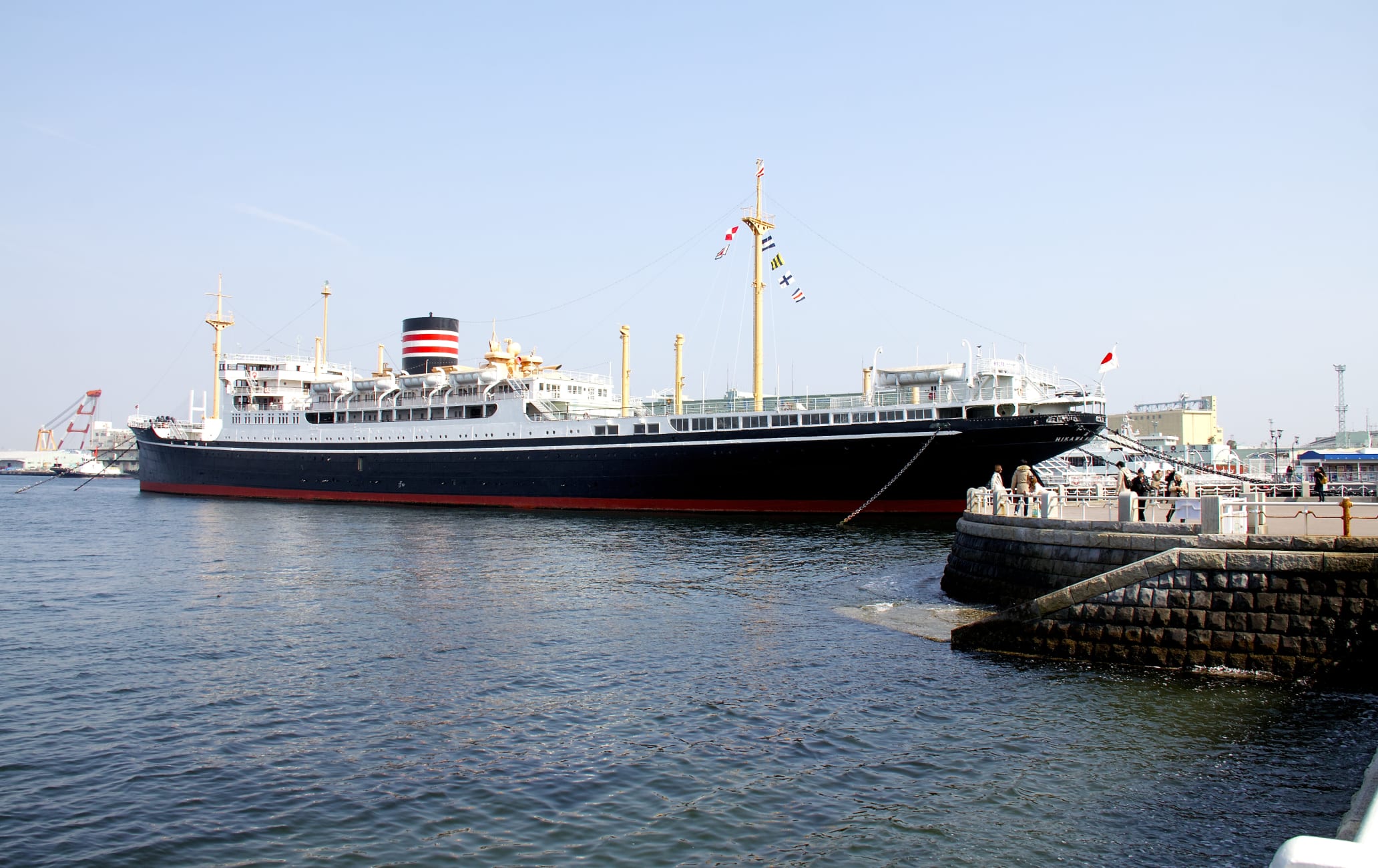Ein kraftvolles Symbol der japanischen Kriegszeit
Die Hikawa Maru diente der Marine im Zweiten Weltkrieg als Lazarettschiff. Heute ist das Schiff eine wertvolle Erinnerung an die Kriegszeit in Japan. Spazieren Sie auf den Decks dieses gut erhaltenen Passagier- und Frachtschiffs und erfahren Sie mehr über die Kriegszeit von Japan.
Kurzinfo
Die Jungfernfahrt führte das Schiff im Jahr 1930 von Kobe nach Seattle.
Heute liegt es im Hafen von Yokohama als Museumsschiff.
Die Hikawa Maru überquerte den Pazifischen Ozean 254 Mal in einem Zeitraum von 30 Jahren.

Anfahrt
Sie erreichen die NYK Hikawa Maru mit dem Zug und zu Fuß von zahlreichen touristischen Orten in Yokohama.
Die Hikawa Maru liegt vor dem Yamashita-Park. Der nächstgelegene Bahnhof ist der Bahnhof Motomachi-Chukagai an der Minatomirai Line, die den Bahnhof Yokohama mit dem Bahnhof Shibuya verbindet. Die nächstgelegenen JR-Bahnhöfe Ishikawacho und Kannai liegen rund 15 Minuten entfernt. Die Seabass-Fähre hält am Yamashita-Park.

Eine faszinierende Geschichte
Die Hikawa Maru wurde 1930 fertiggestellt. Sie war das modernste Schiff ihrer Zeit und diente auf dem Seattle-Abschnitt der Nordamerika-Route als Frachtschiff über den Pazifik. Während des Zweiten Weltkriegs beförderte die Hikawa Maru auch jüdische Flüchtlinge, die vor der Verfolgung durch die Nazis nach Kanada und in die USA flohen. Als Lazarettschiff transportierte sie verwundete Soldaten nach Japan, wo sie dreimal von Torpedos getroffen wurde, aber nicht ernsthaft beschädigt und versenkt werden konnte, weil sie mit dickeren Stahlplatten als andere Schiffe gebaut worden war.

Überstandene Kriegszeit
Das Schiff wurde 1960 außer Dienst gestellt und seit dem darauffolgenden Jahr liegt die Hikawa Maru vor dem Yamashita Park, der für die Öffentlichkeit zugänglich ist. 2016 wurde sie als einziger noch existierender japanischer Frachter aus der Vorkriegszeit zum Nationalen Kulturgut erklärt. Sie wurde im Jahr 1960 endgültig außer Dienst gestellt und dient heute als Museum, das dauerhaft in der Bucht von Yokohama liegt.

Besuch im nahegelegenen Museum
Das NYK Maritime Museum befindet sich nordwestlich vom Schiff in der Nähe des Bahnhofs Bashamichi. Hier werden Exponate, Artefakte und Dokumente ausgestellt, die die Geschichte des Eigentümers der Hikawa Maru, Nippon Yusen Kaisha (NYK), über die Jahrzehnte vor dem Krieg, während des Kriegs und nach dem Krieg dokumentieren.













































